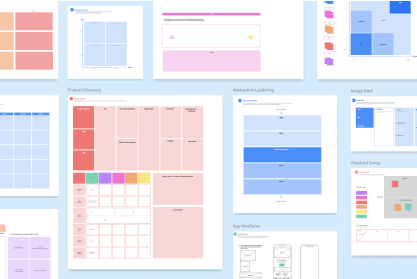If meetings are such a huge part of your day, they should be worth the time and effort it takes to attend them.
According to a poll taken during our recent webinar with Forrester, the majority of attendees (61%) anticipate a hybrid model; three days in a traditional office space, two days from a home office).
Ask yourself: if you’re on a hybrid team, how can your video meetings be better? Should leaders be thinking about their approach to meetings differently, especially if remote work is going to continue to be a part of your regular work life? What new technology is going to shake things up and set a new tone for hybrid workplaces?
In this article, we promise to avoid referencing “the new normal.” We think we’ve all had enough eye-rolls these past few years to last a lifetime. Instead, we’re going to provide you with high-quality insights to make the most of your meetings in 2022 and beyond.
Keep Your Meetings Short, Sweet, and Small
Whether you’re on a remote team or working in a hybrid model, it’s safe to assume you spend hours of your day sitting in on video conferences. Even if you’re back in a traditional office space, video conferencing is likely a part of your everyday routine. Video and audio setbacks are as common as fire drills.
As we’re sure you’re aware, it’s much too easy for a Slack conversation to escalate to a 30-minute touch-base. Flexible work models can be a double-edged sword in that regard; some employees feel as though they’re considered to always be online when not working in a physical office space due to the fluidity of working from home.
This is why Zoom fatigue is now a common part of our vernacular. In fact, a 2021 study reveals that thirty-two million remote workers report experiencing fatigue and burnout from online meetings. This can have a direct impact on team culture and can make employees feel isolated and bogged down by the inertia of it all.

Every meeting should be set with intention. Have you ever found yourself sitting in a recurring meeting and realized you don’t even remember what the point of it is? Resist the kneejerk reaction to stay in constant contact and have faith that your team can collaborate asynchronously if the need arises.
It’s also important to consider how many people are asked to join a given meeting. A good rule of thumb to follow is Amazon’s “two-pizza rule”; if you ordered two pizzas, would it be enough to feed everyone present? If not, don’t add another pizza – revisit who you invited and consider if everyone needs to be there, or if they can be filled in on details that pertain to their specific role after the fact.
The most productive meetings tend to involve four to six people and are short enough to let employees feel like they’ve said their share without getting too into the weeds of big-picture initiatives.
Engage Your Hybrid Team
Without the face-to-face contact that we’re used to, remote jobs can make employees feel as though their home offices are islands.
On the flip side, spending half of your day in meetings that could have been emails is just as frustrating. Which leads to a pressing question: how can remote teams strike a healthy balance between independent work and consistent communication?
Teams that aren’t used to hybrid workspaces are accustomed to having more robust video conferencing solutions in the office for disparate remote workers. But now, most people are limited to a tablet, laptop, or messaging app on a smartphone.

Quite frankly, Google Meet just doesn’t cut it anymore. It’s harder to engage with people when body language is limited to tiny squares on a screen, especially with the more introverted members of your team.
This leads to the need to segment your gatherings into the four different types of meetings:
The Four Different Types of Meetings
1. Presentation (informative) – Consider this like a show-and-tell in which you have something to share with the rest of the class. Everyone that needs to hear it is involved.
2. Brainstorm (thinking through) – Maybe you’re trying to put together some half-formed ideas and determine roadblocks or the best foot forward.
3. Connect (relational) – Human connection is of the utmost importance with hybrid teams. Nothing can take the place of face-to-face relationships, but taking the time to connect with your team in a more social, relaxed context builds trust and cultivates a healthy team culture.
4. Do (task-oriented) – This timeslot should be used for project planning with very date-by-date timelines for key players. What needs to be done, and when? And by who?
Considering these meeting structures, be mindful of how you plan your meetings and what you’re trying to accomplish in order to ensure that you aren’t contributing to video conference burnout.
Pro tip: instead of scheduling a meeting with a specific timeframe that people need to fit into their schedule, you can also record your meeting so your remote team can watch it on their own time. For meetings where you don’t expect a lot of conversation or questions, try recording instead of setting a meeting. Answer any questions, share vital information, make decisions, and brainstorm through messaging apps such as Slack.
This brings us to our next point:
Bring Your Meetings to the Content
Most (if not all) meetings stem from some form of content. Considering the four types of meetings, three of them rely on content for collaboration. Whether that be a PowerPoint presentation that needs to be reviewed, assets that need to be brought to the attention of decision-makers, or storyboards that need to be approved by the director.
To have the most productive meetings, you need to ensure that your content is at the forefront of the discussion and accessible to all stakeholders – whether they’re in a physical office space or part of a remote team.
Solutions like Bluescape allow teams to iterate in real-time within customizable workspaces with video and audio meeting capabilities. This enables teams across departments to finalize projects faster so that they can focus on the big picture instead of spending time getting everyone on the same page.
Learn how to have better meetings with Bluescape here.
Start Having Better Meetings Today
You should always keep one eye on the future. This rings true for the future of how teams work together.
The hard truth is that meetings will continue to take up (probably) a majority of your work life. The goal is to make them worthwhile, even as they adapt to a hybrid workplace and the needs of remote teams. With these tips in mind, we hope that you can make the most out of not only the time spent on video conferencing but also the time you spend cultivating a productive team culture.






